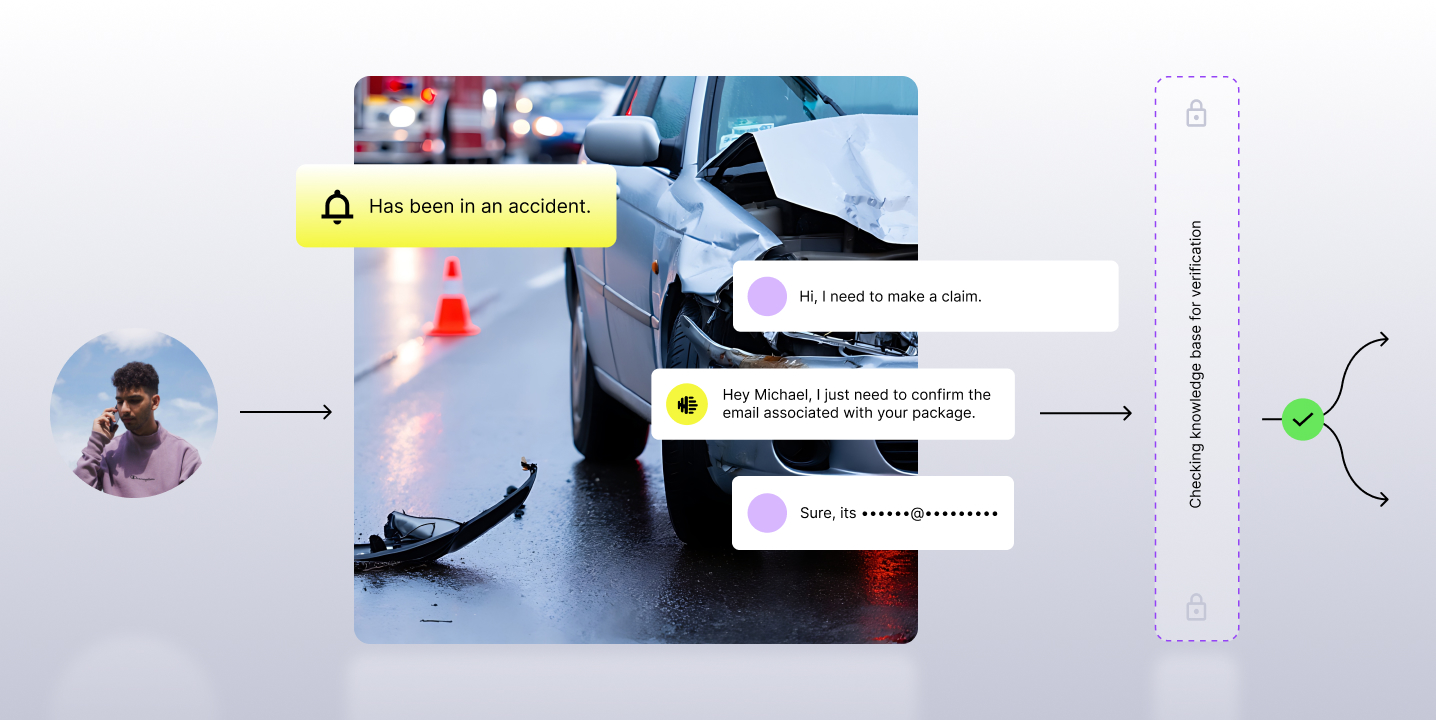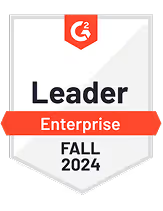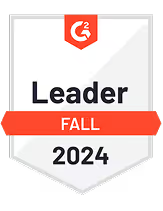What is ACW?
After-Call Work (ACW) is a set of necessary tasks that need to be completed after an agent interacts with the customer. These include updating the system, logging the reason for contact and outcome, updating colleagues, and scheduling follow-up actions.
ACW varies across different customer queries and resolution requests. There is no predetermined yardstick for the duration of ACW. However, it is a metric that impacts average handle time (AHT) and hence, must be closely tracked.
Why is ACW Important?
ACW is an important KPI as it directly impacts contact center efficiency. Getting a thorough insight into how your agents are spending their time is crucial.
According to the International Finance Corporation, it takes an agent about 6 minutes to wrap up post call formalities after every customer interaction. ACW is a critical component of operational efficiency, and is included in the formula for average handle time (AHT) of a call.
As part of AHT, ACW directly impacts call duration, agent efficiency and contact center productivity. As per this source,
A call center with 50 agents that handles 5,000 calls per day can save $2500K USD each day if the average handle time is shortened by 30 seconds. Typically, however, the savings would be even more as the Knowledge-Based Verification phase of a call can easily take over 90 seconds.
What are the Steps to Completing ACW?
Although not an exhaustive list, there are five main steps to complete ACW in a contact center. These include the core tasks for contact centers across sectors:
Step 1: Logging call notes and summarizing
This is to keep record of remarkable observations, challenges faced and new incoming customer queries.
Step 2: Executing required actions
These include tasks like forwarding the customer's case to a technical team or updating know your customer (KYC) information.
Step 3: Assigning an agent to follow up
This ensures the task is assigned to the agent with required expertise and authority.
Step 4: Using notes to update CRM
The agent proactively keeps a track of new information captured about the customer by updating the CRM.
Step 5: Analyzing customer feedback
Continuous feedback helps bridge the gap between the agents and the customers, contributing significantly to the agents’ learning curve.
How Does ACW Improve Agent Performance?
Contact centers lay greatest emphasis on keeping the agents on-the-call as much as possible. After all, that’s where the ROI lies. Keeping your agents on-the-call (especially outbound) most of the time means great ROI, as discussed in the blog 8 ways revenue generating contact center agents increase conversion rates.
Does this mean that after-call work in a call center is just a frustrating diversion for the agents? Or does it have some significance of its own? Let’s find out.
Follow-up time
ACW is a window of opportunity for agents to spend dedicated time to follow-up on customer requests. This includes detailed documentation, updating relevant teams, and scheduling further courses of action.
Increased productivity
Agents can jot down the action points immediately after the call, update any requirements in the system, and comprehensively cover the entire resolution process. Saving these tasks for later can lead to missing of important information and, eventually affecting agent productivity.
Quick feedback
Supervisors monitoring the interactions in real-time may chip in for a quick feedback. This may be to tweak the script or apprise the agent about an error they made in the previous call.
Time for a breather
Constantly attending to customers, speaking for long stretches and managing brand expectations can cause agents to burnout. Short interludes of ACW time gives them a much needed rest and time to regroup before the next train of calls.
Benefits of Tracking ACW for Contact Centers
ACW plays a significant role in maintaining and improving agent performance. But how does ACW impact contact centers? How can contact centers benefit from tracking ACW time?
Reduced customer wait time
Longer ACW time leads to longer hold times for incoming calls and leaves even smaller time frames for outbound calls. Effectively tracking ACW uncovers the need for technical assistance or training to remove workflow bottlenecks that are causing longer customer wait times.
Highlight process issues
Tracking ACW time can reveal any underlying operational issues causing agents to slow down— inconvenient procedure updates or complicated system interfaces. It is important to drill down on these issues to save precious time and enhance the overall performance of a contact centers.
Improving agent performance
As the nature of the tasks is mostly repetitive, a sudden spike in ACW metric can indicate a new process issue that must be specially tackled through appropriate interventions. Efficient tracking of the ACW time gives supervisors a chance to instantly coach or advise the agents spending too much time on post-call processing tasks. It also points out any gaps in agent training and performance.
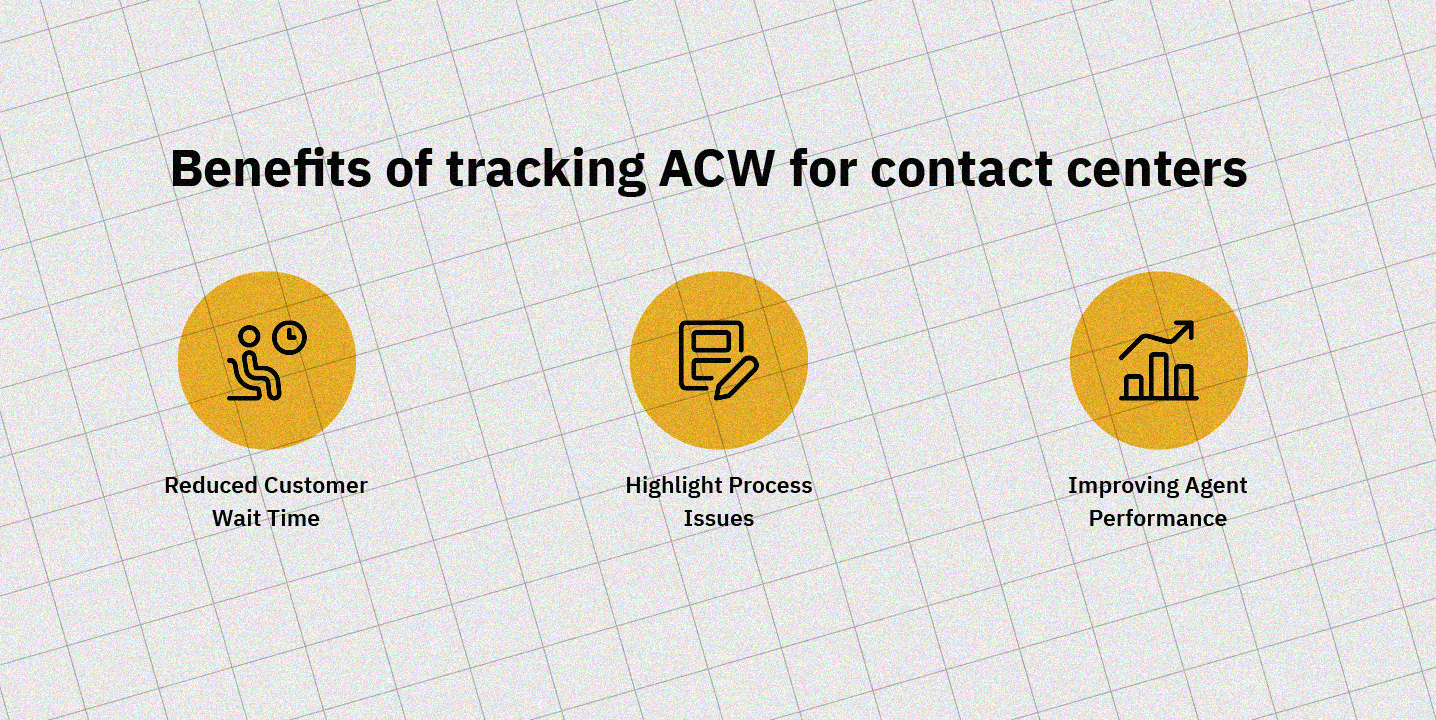
What is the Industry Standard for After Call Work in a Call Center?
Complexity of the problem and the resolution process varies for each customer. Hence, it is hard to arrive at an industry standard for ACW time. But it can be studied as a function of the following variables:
Sector or industry
ACW can vary for different industries and is an important factor to consider this while benchmarking. Sectors such as retail and sales have simple post-call procedures allowing the agents to spend less ACW time while IT and insurance have more complex resolution processes and agents end up spending more time wrapping up the call.
Call type and complexity
Agents usually develop a standard resolution process for repetitive problems. They are well-versed in their resolution and take less wrap-up time. On the other hand, first-time problems and complex issues may require a customized and time-consuming response. This variable is important in determining the range for your metric.
Internal processes
Procedures like detailed documentation, adding customer information, can deliberately increase ACW time. It’s important to revisit and identify internal processes that are greatly impacting ACW and tweaking it based off of agent feedback.
Agent behavior
Agent skills are a huge contributing factor towards ACW. It's important to understand at a granular level, the reasons behind an increased ACW:
- Is the agent fully informed?
- Are they optimizing their steps?
- Is it their typing speed?
- Are they experiencing call fatigue and deliberately avoiding incoming calls?
Understanding the frequency of agent behavioral issues can accurately help set a benchmark. These require deep diving into agent performance analytics by employing sophisticated tools like automated workflows, screen recording and AI.
How Can You Reduce After Call Work?
There are different ways to reduce ACW time. Let’s briefly go through them:
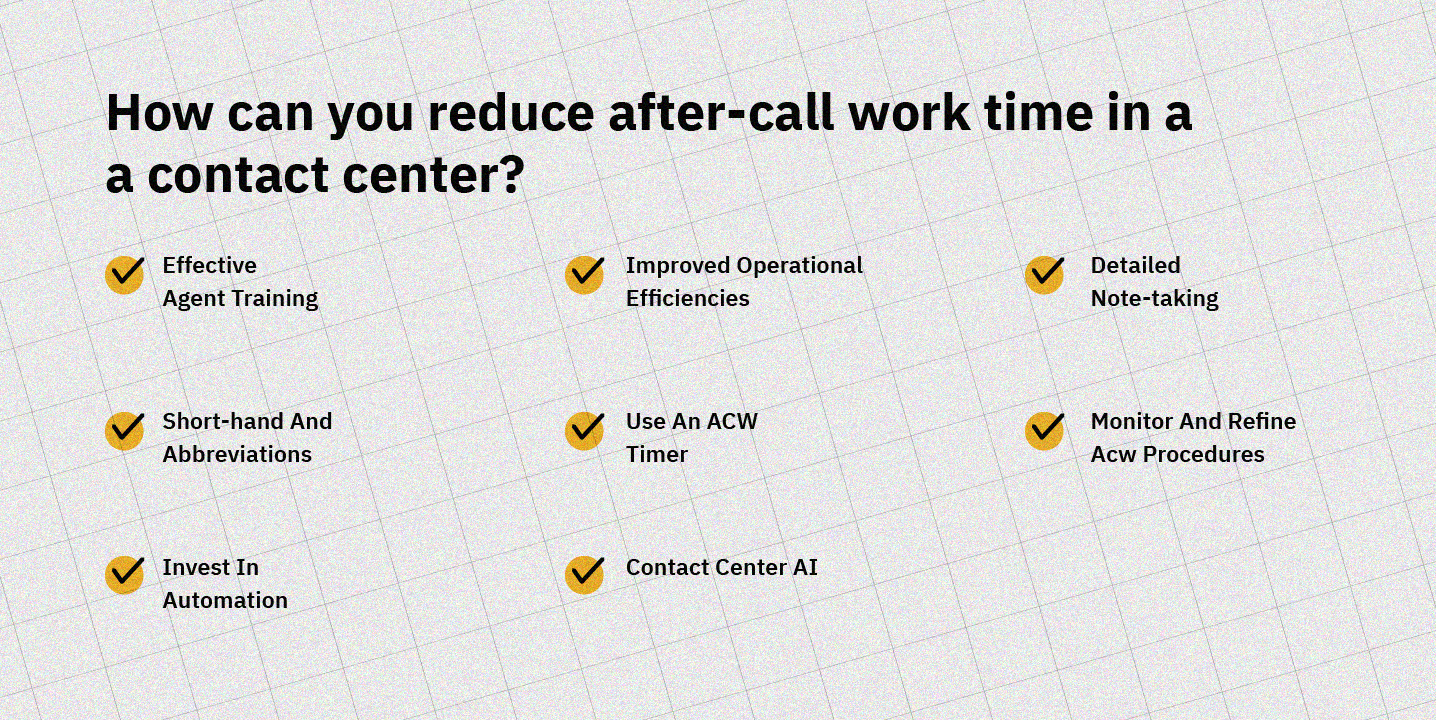
Targeted agent coaching
Agent coaching targeted at improving his/her post-call processing skills is the most important way to empower them and enhance their performance. Skill-specific and tailored coaching programs help eliminate redundant workflows, acquaint agents with the platform and sharpen maneuverability.
Improved operational efficiencies
Advanced technology, agent-friendly CRM interfaces and seamless data entry process can significantly reduce the ACW time.
Detailed note-taking
Agents taking notes during the call can use it to augment their thought process and smoothly carry out the after-call work..
Shorthand and abbreviations
These can be helpful in reducing the wrap-up time. Detailed documentation can take up time and is dependent on the typing speed of the agent. A great way to remove this bottleneck and reduce ACW is to develop a common style guide introducing shorthand or abbreviations for agents. A common style guide will serve as a reference for future agents too.
Use an ACW timer
This is a simple but a highly effective solution. Implementing a timer to track ACW time can help identify agents who are extending this time limit. There could be several reasons for this— slow typing speed, lack of process knowledge, ignorance of impact on contact center costs, etc. Instead of generic training for all agents, contact centers can focus and provide personalized coaching to these specific agents.
Monitor and refine ACW procedures
Since ACW is a process of repetitive tasks performed by all agents, constant monitoring can uncover workflow gaps hindering the ACW metric like redundant tasks or unnecessary documentation. In case of sudden spikes, continuous monitoring can help catch these early on and nip it in the bud, avoiding an increase in AHT, and reducing overall costs.
Invest in automation
Automation of repetitive tasks that do not require individual agent attention can save lots of time cumulatively. These include tasks like creating the call summary, updating the CRM system, and specific call types where AI voice agents can do a great job or managing commitments. Automating these tasks will free agents from manual and repetitive actions, drastically cutting down your ACW time.
Contact Center AI
This ensures that the customer is connected only to the right agent and avoids having to send information to another colleague during the ACW time. Contact Center AI eliminates human error, enhances accuracy and helps design agent-specific coaching programs, all in all streamlining post-call workflows and reducing ACW time.
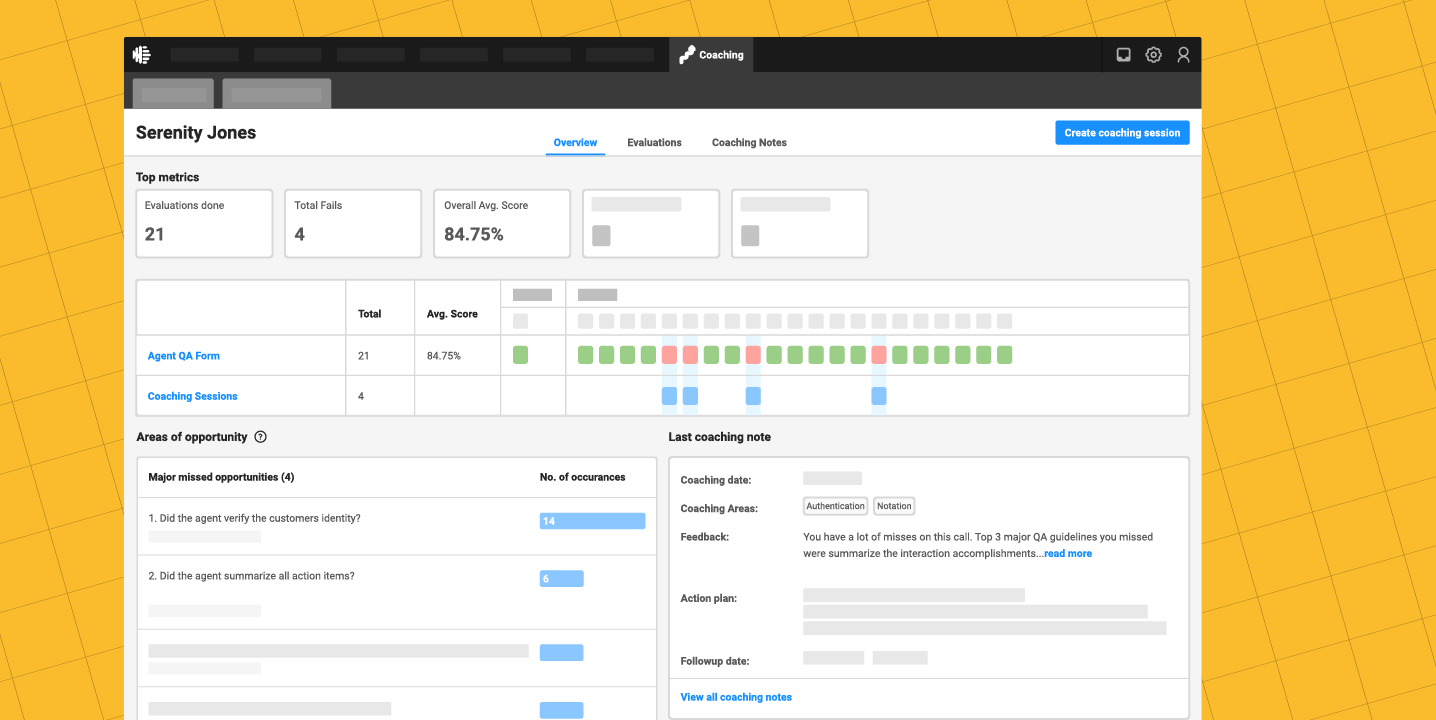
Wrap Up
Now you know the meaning of ACW and how it is a huge part of an agent’s workflow. Keeping track of it is important to save precious time, enhance operational efficiency, and get the maximum performance out of your agents.
After Call Work time has its impact on agent performance, and effective measuring can ensure agents are spending more time on-the-call instead of being wrapped in processes. Gaining deep insight into the post-call process to refine after-call work and reduce the wrap-up time can considerably reduce ACW.










